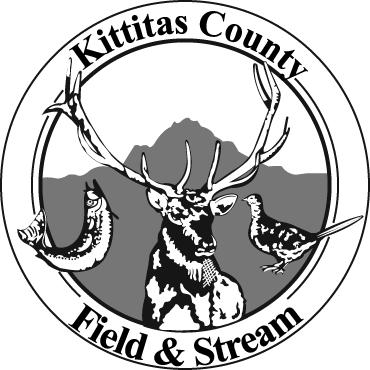With the wing/tail collection and research across Washington’s grouse habitat, and what seems to be an uptick in interest, I’ve been getting several queries from homeys about forest grouse hunting, along with a few reports of locally plentiful birds. While I am unable to disclose certain hot spots within their habitat – under penalty of activities I do not wish to endure – I am quite interested in sharing what I have learned about these pretty interesting and delicious birds.
I our state, as with most western states, we enjoy a long hunting season for our forest grouse; it opened the first of September and runs through the New Year’s Eve. Bag limits for our four species/subspecies of these tasty galliformes (“chicken-like” partridges) are quite generous. Hunters may take four a day of any species (only three of any one type) and have 12 in possession (including only nine of any one type). One of the reasons for the popularity of our grouses is that the long season runs across all the other hunts (deer, elk, etc.) which take us into the woods. I love grouse for all these reasons.
We have three (technically, four) forest grouse in Washington. Their numbers have stayed pretty stable over the last century or so, but population are cyclic. This seems to be an “upward” year.
Spruce grouse, Falcipennis Canadensis, (aka “fool hens,” since they often sit tight even in the face of danger) are associated with lodgepole pines, from which they seldom wander. Spruce grouse are found all across northern North America: Paradise is at the southern edge of their range, and limited habitat makes them our least common grouse. The smallest of our grouse, an average fool hen may weigh a bit over a pound and be 17 inches long from bill tip to tail tip.
Ruffed grouse habitat also crosses the continent, but a bit farther south than the lodgepole turf of their northern cousins. Ruff’s preference for riparian areas (willows, cottonwoods, dogwood and so on) with nearby forests means that we have plenty of habitat and generally good numbers. The ruffed grouse, Bonasa umbellus, is just a bit larger than our fool hen, with lengths to 20 inches and weights to a pound and a half or more. This is the grouse which five-year-old Huckling Tena once called “a chicken dressed up like a turkey!”
Our third and fourth forest grouses are the “blue” grouses, Dendragapus obscurus. At 20 inches in length and weights up to nearly three pounds, this is our largest grouse. These birds range from the Yukon to New Mexico, and were among the very first western birds recorded. In August of 1776, the Dominguez-Escalante Expedition wrote of the birds as its members sought a route from Santa Fe to the California colonies, and developed a taste for the delicious wild chickens.
Blue grouse have been my favorites since I was nine or ten. Uncle Ed took me out on his place up the Little Chumstick, north of Leavenworth, to meet his blues – his “chickens” he called them. It was there I learned why I’d been given my uncle Van’s ancient .22 Winchester Model 67, and how tasty those birds were. Some decades later, they were the centerpiece of one of the most enjoyable evenings of my life, but that’s another story.
Male blues have a bluish-gray plumage, and “combs” above their eyes which often change color from yellow to red when they become excited or disturbed. The females have a mottled-brown plumage, and blend in very well with their surroundings when hiding or on the nest.
Now, about that “third (and fourth)” business. After studying DNA evidence, The American Ornithologists’ Union separated blue grouse into two separate species in 2006. We now have the sooty grouse, Dendragapus fuliginosus, and the dusky grouse, Dendragapus obscurus. Similar in most ways, the defining characteristics are subtle, but noticeable. In mating display, the fleshy air-sac patches at the neck are reddish-purple in the dusky and yellow in the sooty. In the field, the most useful distinguishing marks are on their tails; the dusky has all dark tail feathers with occasional gray tips, while the sooty has a broad gray terminal band. Everything else you want to know is easily available online at Cornell University’s bird guide at www.birds.cornell.edu/AllAboutBirds/BirdGuide.
The sooty grouse ranges from Alaska to California, and is fairly common in the western part of our state. The dusky grouse, aka “dusky blue grouse” or “interior blue grouse” occupies the rest of what we have long called the range of the blue grouse. Washington is apparently the only state where the ranges of the two species actually overlap.
A few wildlife agencies have formalized the species separation. Montana continues to use blue grouse for one of its forest species. Oregon calls them blues, but locates the sooty through most of its forest grouse range, and the dusky in the northeast. Idaho and Colorado regs now refer only to the dusky grouse. In Washington, we still hunt “blue grouse,” with a note that it includes both sooty and dusky.
The dusky/sooty/blue grouse are in brushy and open transition zones around the firs and pines.
Oh yes, that collection and research. Successful forest grouse hunters are asked to place a wing and tail from each forest grouse taken in a paper bag – each in its own bag. Bring the bags to any DFW office, or drop them into one of the collection barrels scattered in habitat across the state. (You will find paper bags at each collection barrel.) DFW’s website and district offices will help you find collection barrels. This is important for the future of our grouse.
Happy grousing (in a good way).




